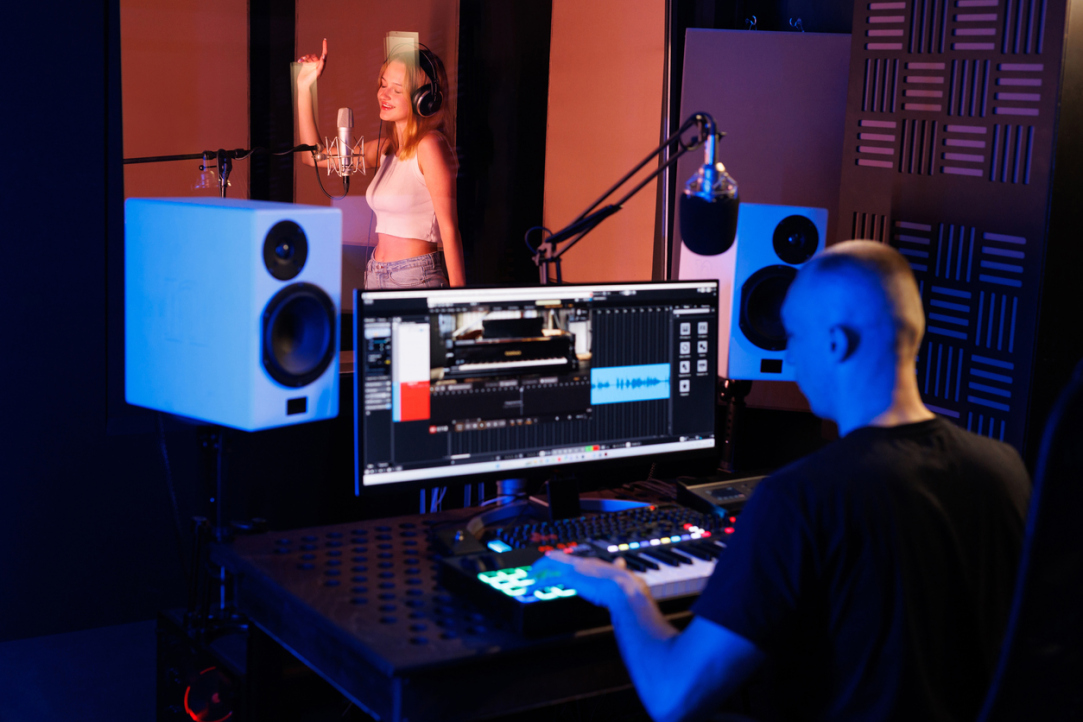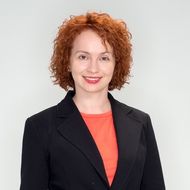Trend-Watching: Radical Innovations in Creative Industries and Artistic Practices

The rapid development of technology, the adaptation of business processes to new economic realities, and changing audience demands require professionals in the creative industries to keep up with current trends and be flexible in their approach to projects. Between April and May 2025, the Institute for Creative Industries Development (ICID) at the HSE Faculty of Creative Industries conducted a trend study within the creative sector.
Over 300 leading professionals representing a range of creative industries took part in the study. Experts were asked to forecast key trends, radical innovations, and developments likely to emerge in the creative industries and the broader sphere of artistic practice over the next three years.
How exactly will the creative economy change under the influence of new technologies and trends? Survey results provide a clear picture of the main directions of this transformation.
Technological Trends in the Creative Industries:
The active integration of artificial intelligence (AI) across all creative industries—from content generation in advertising to assisting composers in creating music
Neurotechnology and wearable devices that read bodily metrics and enable new forms of interaction are becoming central to the development of interactive media and music; this includes the rise of cognitive, neuro-adaptive predictive wearables
Metaverses, mixed reality (MR), and augmented reality (AR) are being used as tools to embed brands into digital environments; creative projects are increasingly integrated with the Internet of Things (IoT)
Changing Approaches to Creativity:
A shift away from formulaic solutions towards experimental approaches
Personalisation and interactivity are becoming the norm—from tailored event experiences to deeply personalised content in advertising
The automation of routine processes frees up more time for creative work
Gamification is becoming a standard mode of project delivery
Financial Evaluation of Creative Output:
Data and metrics are being used to assess the financial value of creative work. Big data enables fairer valuation and pricing based on the creative product’s usefulness to the end consumer—for example, by analysing audience reactions in interactive media
The marketplace model is transforming creativity by establishing new pricing mechanisms and methods of distribution for creative products
Education and Research:
The convergence of different scientific disciplines and the representation of interdisciplinary toolkits
The emergence of new formats such as Practice as Research
The further convergence of science, art and education, grounded in the innovative principles of open science
The digitalisation of science and the development of electronic academic journals are creating new ways of disseminating knowledge—including the establishment of creative digital platforms and the creation of repositories of high-quality metadata
The spread of scientific knowledge on Open Access platforms
The emergence of neural network-based pedagogical simulacra
Social and cultural changes:
The segmentation of audiences into smaller communities calls for more narrowly targeted creative strategies
The elitisation of live events (concerts, exhibitions) is accompanied by the growth of communities and user-generated content (UGC)
Greater emphasis is being placed on individual experience for participants and spectators, alongside the development of event interactivity

Irina Sakhno
‘A key focus of our HSE University Journal of Art & Design is the study of the latest theories in art and design practice. In the coming years, new formats for Practice as Research, where practising artists join academia, will shape innovative publishing strategies for journals in the field of art and design,’ said Irina Sakhno, Professor at the HSE Art & Design School and Chief Editor of the HSE University Journal of Art & Design.

Elena Ermakovishna
‘Artificial intelligence will assist in handling routine tasks, giving people more time for creativity. In the fashion industry, AI will be widely used in the production of collection campaigns,’ shared Elena Ermakovishna, Head of the HSE CREATIVE HUB, lecturer at the HSE Art & Design School, cultural event producer, art historian, and designer.

Evgeniya Evpak
‘In music, we are seeing the elitisation of live concerts and a growing focus on artists’ work in building communities of like-minded people. There is also a trend towards the recursive mythologisation of musical narratives, with new transmedia branches developing from fan fiction and UGC (user-generated content),’ explained Evgeniya Evpak, composer, music innovation historian, and music industry researcher.

Aleksandr Baru
‘Storytelling will become the foundation of advertising,’ said Aleksandr Baru, lecturer in design thinking and marketing at the HSE University Art & Design School.
Experts believe that the creative industries are undergoing a radical transformation due to the influence of new technologies. This change will require flexibility from both professionals and institutions, as well as a rethinking of traditional business models.
See also:
Scientists Test Asymmetry Between Matter and Antimatter
An international team, including scientists from HSE University, has collected and analysed data from dozens of experiments on charm mixing—the process in which an unstable charm meson oscillates between its particle and antiparticle states. These oscillations were observed only four times per thousand decays, fully consistent with the predictions of the Standard Model. This indicates that no signs of new physics have yet been detected in these processes, and if unknown particles do exist, they are likely too heavy to be observed with current equipment. The paper has been published in Physical Review D.
HSE Scientists Reveal What Drives Public Trust in Science
Researchers at HSE ISSEK have analysed the level of trust in scientific knowledge in Russian society and the factors shaping attitudes and perceptions. It was found that trust in science depends more on everyday experience, social expectations, and the perceived promises of science than on objective knowledge. The article has been published in Universe of Russia.
Scientists Uncover Why Consumers Are Reluctant to Pay for Sugar-Free Products
Researchers at the HSE Institute for Cognitive Neuroscience have investigated how 'sugar-free' labelling affects consumers’ willingness to pay for such products. It was found that the label has little impact on the products’ appeal due to a trade-off between sweetness and healthiness: on the one hand, the label can deter consumers by implying an inferior taste, while on the other, it signals potential health benefits. The study findings have been published in Frontiers in Nutrition.
HSE Psycholinguists Launch Digital Tool to Spot Dyslexia in Children
Specialists from HSE University's Centre for Language and Brain have introduced LexiMetr, a new digital tool for diagnosing dyslexia in primary school students. This is the first standardised application in Russia that enables fast and reliable assessment of children’s reading skills to identify dyslexia or the risk of developing it. The application is available on the RuStore platform and runs on Android tablets.
Physicists Propose New Mechanism to Enhance Superconductivity with 'Quantum Glue'
A team of researchers, including scientists from HSE MIEM, has demonstrated that defects in a material can enhance, rather than hinder, superconductivity. This occurs through interaction between defective and cleaner regions, which creates a 'quantum glue'—a uniform component that binds distinct superconducting regions into a single network. Calculations confirm that this mechanism could aid in developing superconductors that operate at higher temperatures. The study has been published in Communications Physics.
Neural Network Trained to Predict Crises in Russian Stock Market
Economists from HSE University have developed a neural network model that can predict the onset of a short-term stock market crisis with over 83% accuracy, one day in advance. The model performs well even on complex, imbalanced data and incorporates not only economic indicators but also investor sentiment. The paper by Tamara Teplova, Maksim Fayzulin, and Aleksei Kurkin from the Centre for Financial Research and Data Analytics at the HSE Faculty of Economic Sciences has been published in Socio-Economic Planning Sciences.
Larger Groups of Students Use AI More Effectively in Learning
Researchers at the Institute of Education and the Faculty of Economic Sciences at HSE University have studied what factors determine the success of student group projects when they are completed with the help of artificial intelligence (AI). Their findings suggest that, in addition to the knowledge level of the team members, the size of the group also plays a significant role—the larger it is, the more efficient the process becomes. The study was published in Innovations in Education and Teaching International.
New Models for Studying Diseases: From Petri Dishes to Organs-on-a-Chip
Biologists from HSE University, in collaboration with researchers from the Kulakov National Medical Research Centre for Obstetrics, Gynecology, and Perinatology, have used advanced microfluidic technologies to study preeclampsia—one of the most dangerous pregnancy complications, posing serious risks to the life and health of both mother and child. In a paper published in BioChip Journal, the researchers review modern cellular models—including advanced placenta-on-a-chip technologies—that offer deeper insights into the mechanisms of the disorder and support the development of effective treatments.
Using Two Cryptocurrencies Enhances Volatility Forecasting
Researchers from the HSE Faculty of Economic Sciences have found that Bitcoin price volatility can be effectively predicted using Ethereum, the second-most popular cryptocurrency. Incorporating Ethereum into a predictive model reduces the forecast error to 23%, outperforming neural networks and other complex algorithms. The article has been published in Applied Econometrics.
Administrative Staff Are Crucial to University Efficiency—But Only in Teaching-Oriented Institutions
An international team of researchers, including scholars from HSE University, has analysed how the number of non-academic staff affects a university’s performance. The study found that the outcome depends on the institution’s profile: in research universities, the share of administrative and support staff has no effect on efficiency, whereas in teaching-oriented universities, there is a positive correlation. The findings have been published in Applied Economics.


